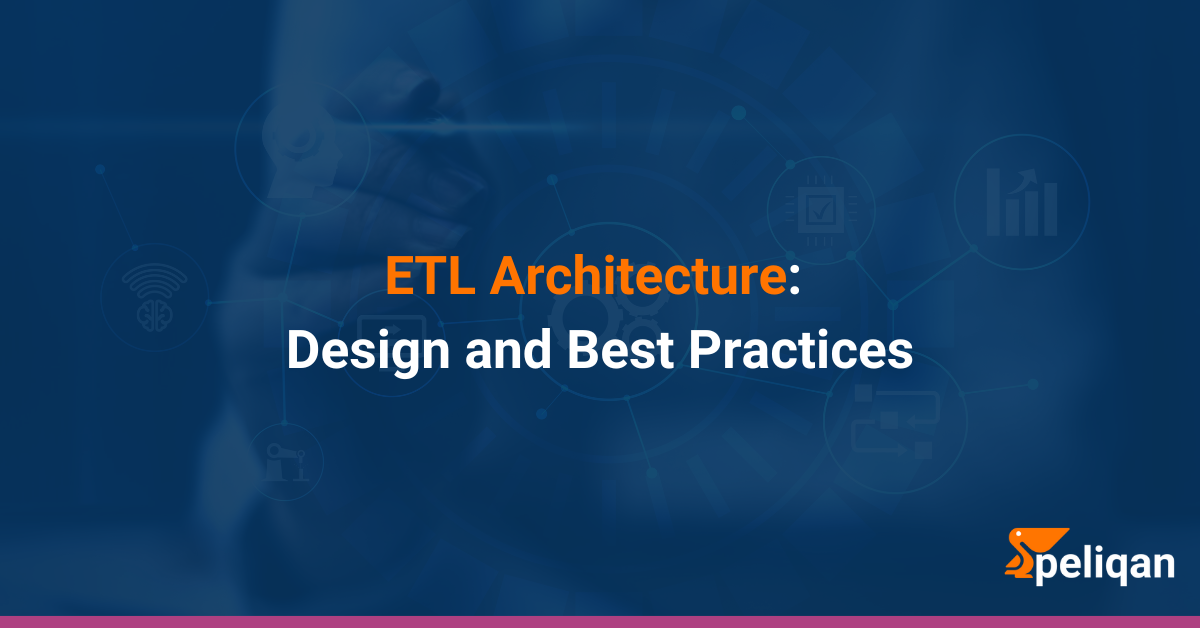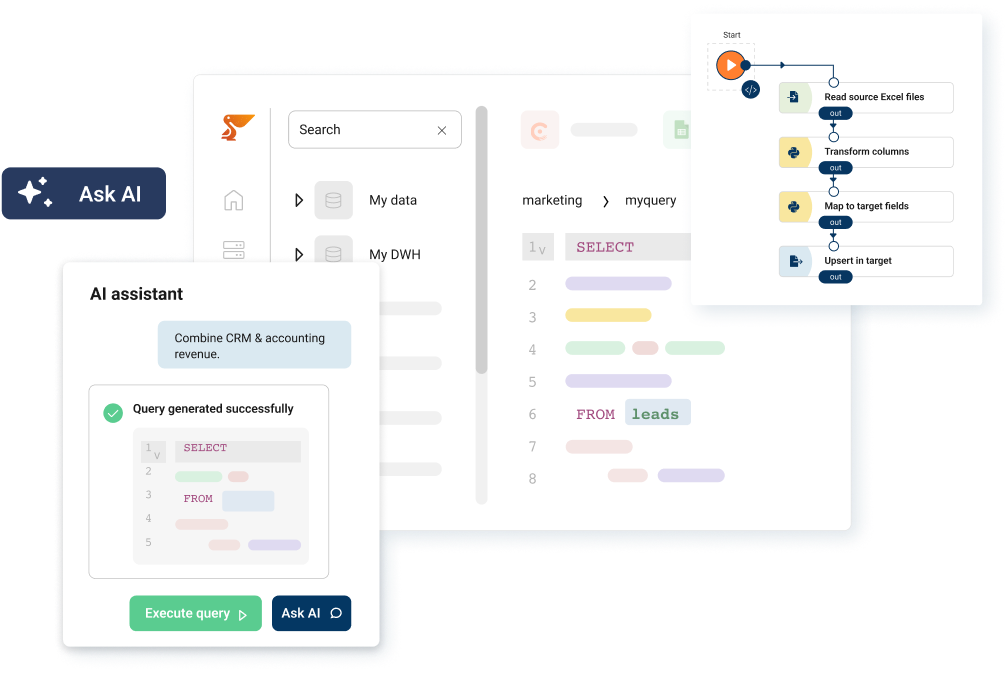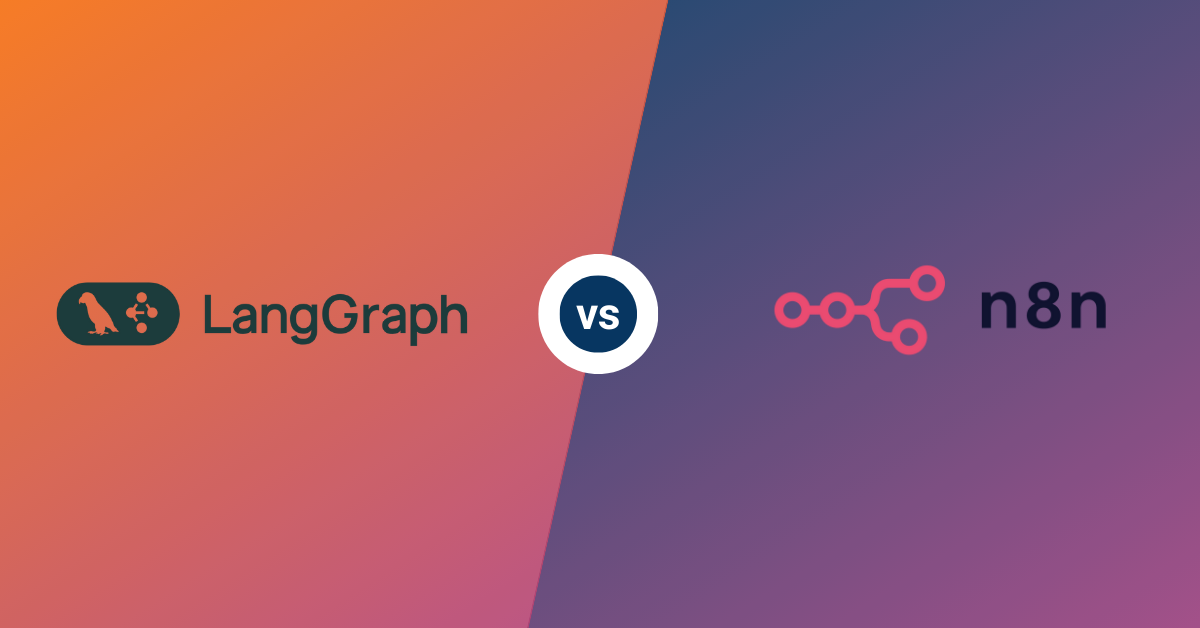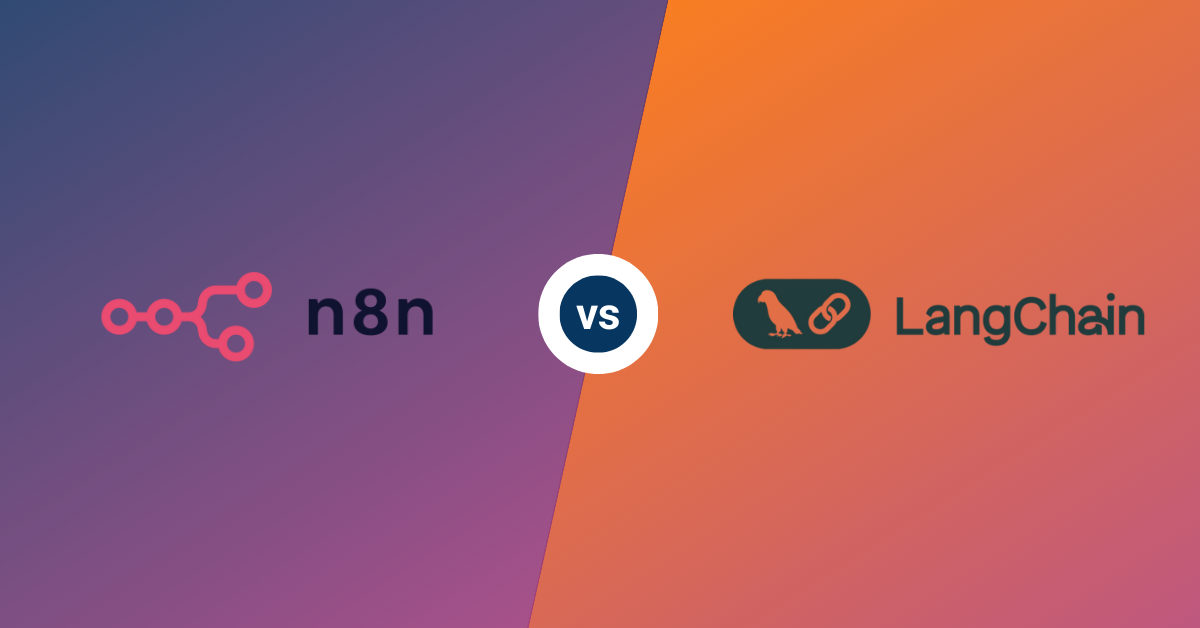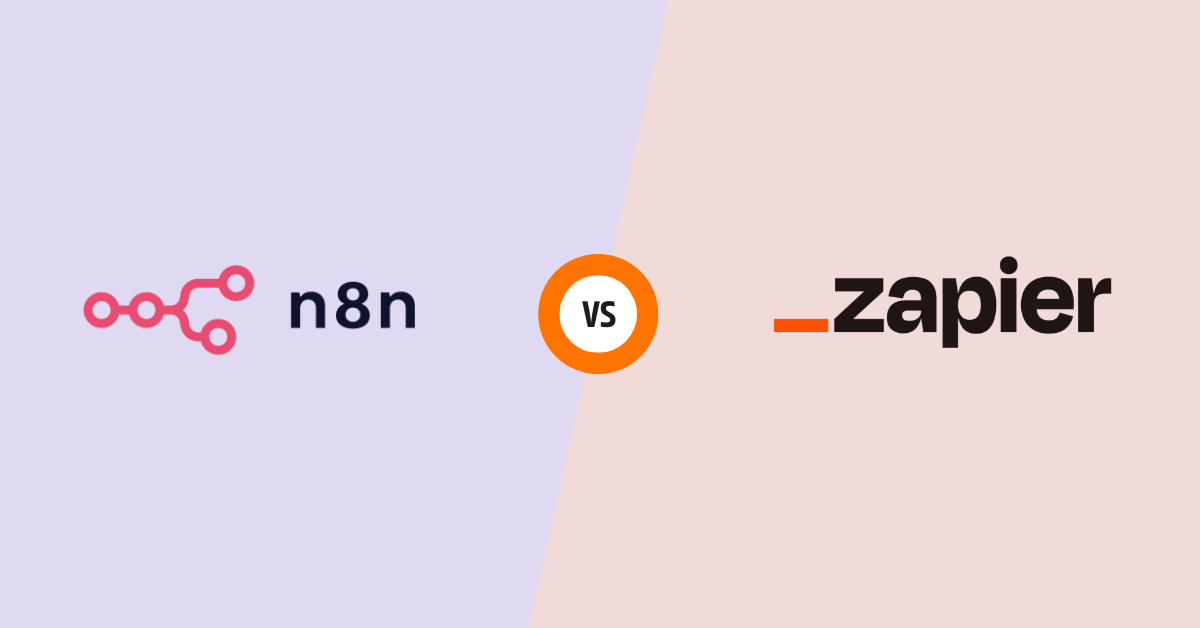In today’s data-driven world, organizations are inundated with information from countless sources. The challenge lies not just in collecting this data, but in transforming it into actionable insights that drive business decisions. This is where ETL (Extract, Transform, Load) architecture comes into play. As the foundation of data integration processes, ETL architecture is crucial for businesses looking to harness the power of their data effectively.
In this comprehensive guide, we’ll dive deep into ETL architecture, exploring its components, best practices, and how it can revolutionize your data management strategy.
What is ETL Architecture?
ETL architecture is a structured framework that governs the extraction, transformation, and loading of data from various sources into a unified data warehouse or database. This architecture is designed to streamline the process of data integration, ensuring that data is accurate, consistent, and readily available for analytical and operational purposes.
ETL Process
The foundational components of ETL architecture can be understood through the three core processes: Extract, Transform, and Load. Each of these pillars plays a critical role in ensuring the integrity, efficiency, and usability of data throughout the data integration lifecycle.
Extract
The extraction phase is focused on retrieving data from various source systems, which can include databases, APIs, data lakes, and even flat files. During this process, it is essential to employ efficient and reliable methods for accessing diverse data formats while maintaining the data’s integrity.
Techniques such as incremental extraction are often used to reduce the volume of data being processed at one time, thus optimizing performance. The extract phase must also incorporate robust error handling and logging mechanisms to track any issues in real time.
The extraction phase involves pulling data from multiple sources. These can include:
- Databases (relational and non-relational)
- CRM and ERP systems
- Flat files (CSV, JSON, XML)
- APIs and web services
- IoT devices and sensors
Transform
Once the data is extracted, it enters the transformation stage, where it is cleansed, formatted, and enriched to meet the requirements of the target system. This phase involves a myriad of operations, including data cleansing (removing duplicates and correcting inaccuracies), aggregation (summarizing data points), and the application of business rules (standardizing measurements or currencies).
Furthermore, transformation may also include the integration of data from multiple sources, ensuring that disparate datasets can be combined into a coherent structure that supports thorough analysis.
During transformation, raw data is cleaned, standardized, and prepared for analysis. Common transformation tasks include:
- Data cleansing (removing duplicates, handling missing values)
- Data enrichment (adding metadata, merging external data)
- Data formatting (standardizing date formats, currency conversions)
- Data validation (ensuring data meets quality standards)
- Aggregations and calculations
Load
The final pillar, the load phase, is centered on transferring the transformed data into the target data warehouse or database where it can be accessed for analysis and reporting. This process must be methodical to ensure that data consistency and integrity are preserved. Options for loading data include full loads (where all data is loaded anew) and incremental loads (where only new or changed data is introduced).
The choice of loading strategy can significantly impact the performance of the system and the timeliness of the data available for end-users. The final step involves loading the transformed data into a target system. This could be:
- Data warehouses
- Data lakes
- Business intelligence tools
- Analytical databases
In summary, the three pillars of ETL – Extract, Transform, and Load, are interdependent and vital for the successful implementation of data integration solutions. Each phase must be meticulously designed and executed to enable organizations to navigate the complexities of their data landscape and extract actionable insights for strategic decision-making.
ETL Architecture: Key Components
ETL architecture comprises several critical components that work in cohesion to facilitate the seamless integration and management of data. Understanding these components is essential for establishing a robust ETL process that reliably delivers high-quality data for analysis.
Data Sources
The foundation of any ETL architecture is its data sources. These range from structured systems like relational databases to unstructured sources such as social media feeds or IoT device outputs. Understanding the nature and format of data sources is crucial for determining the methods of extraction and the tools required for effective data integration.
ETL Tools
ETL tools serve as the engines that drive the extraction, transformation, and loading processes. These can be proprietary software solutions, open-source platforms, or cloud-based services. Advanced ETL tools offer features such as real-time data processing, scheduling capabilities, and user-friendly interfaces for easier management and monitoring.
Staging Area
Before data is transformed, it often resides in a staging area, a temporary storage location that allows for data manipulation without affecting the original source. This environment provides the flexibility to cleanse and standardize data in preparation for loading into the target database, ensuring that any issues are resolved prior to final integration.
Transformation Engines
Transformation engines are integral to processing data according to defined business rules. These engines apply a set of algorithms and functions to convert raw data into a structured format. Depending on the complexity of transformations required, organizations may utilize specialized tools or applied coding languages like Python.
Target Data Stores
Once data has been transformed, it is loaded into target data stores, which can include data warehouses, data lakes, or other analytical systems. The choice of data storage solution hinges on factors such as the volume of data, business needs, and intended use for the data. Each type of storage offers distinct benefits, such as rapid query performance in data warehouses or the flexibility of raw data storage in data lakes.
Data Governance
Implementing data governance practices throughout the ETL process is vital for ensuring data quality, accessibility, and security. Governance includes setting policies for data usage, creating data catalogs, and establishing protocols for data compliance and privacy. A comprehensive governance framework ensures that the integrity of data is maintained across all stages of the ETL process.
Each of these components plays a vital role in ensuring that ETL processes are executed efficiently and effectively, enabling organizations to derive actionable insights from their data assets. A well-designed ETL architecture not only streamlines data integration but also enhances the overall data strategy of the enterprise.
Designing Your ETL Architecture
Designing an effective ETL architecture is a multifaceted process that entails careful planning, thorough analysis, and a clear understanding of business requirements. To create a robust ETL framework, organizations must consider several key factors, including scalability, flexibility, data quality, and compliance with industry standards.
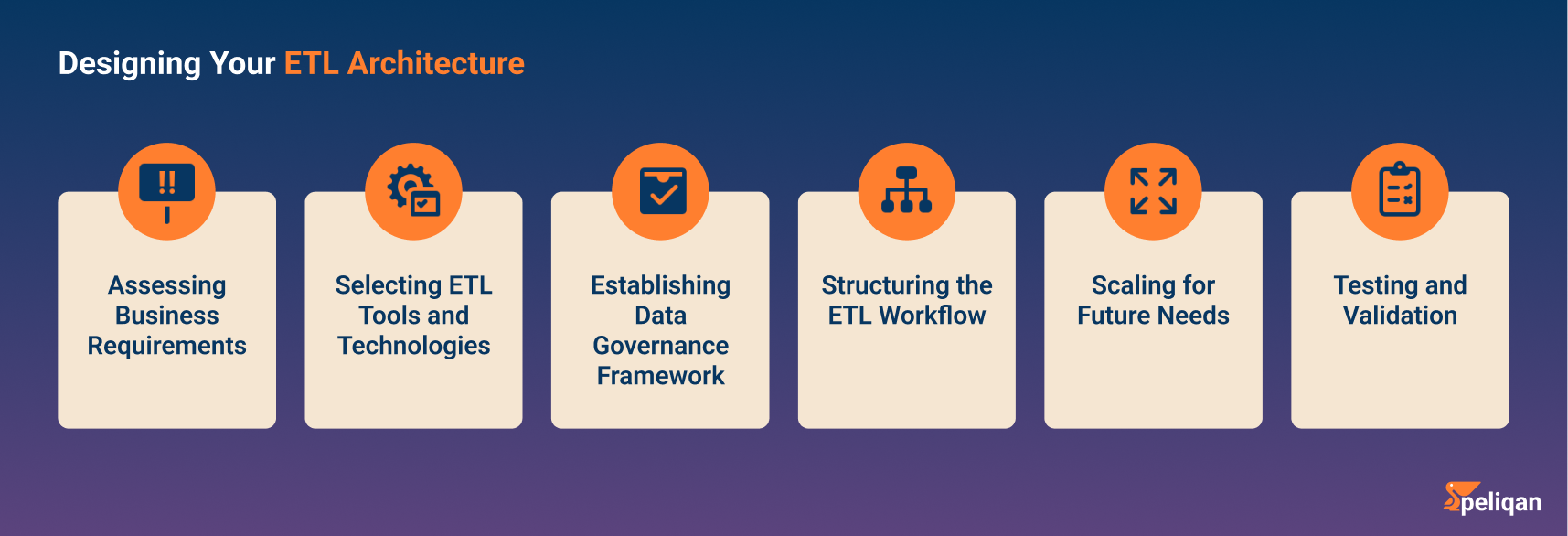
Assessing Business Requirements
The first step in designing your ETL architecture is to conduct a comprehensive assessment of the organization’s data needs. This involves gathering input from stakeholders to identify critical use cases and the specific types of data required for analysis. By understanding the business objectives and the desired outcomes, organizations can tailor their ETL processes to support strategic decision-making.
Selecting ETL Tools and Technologies
Choosing the right ETL tools is paramount to the success of the architecture. Organizations should evaluate various ETL solutions based on criteria such as cost, functionality, scalability, and ease of integration with existing systems. Factors like performance metrics—such as data throughput rates—and support for diverse data sources will also influence this decision. Advanced ETL platforms may offer features like automated scheduling, real-time data processing, and visual data mapping capabilities that enhance efficiency.
Establishing Data Governance Framework
Incorporating a data governance framework during the design phase helps ensure that data quality and compliance are prioritized. This framework should outline roles and responsibilities for data stewardship, define policies for data usage, and establish protocols for maintaining data accuracy and security. Implementing governance at the outset allows for a structured approach to data management, facilitating better trust and reliability in data-driven insights.
Structuring the ETL Workflow
The next aspect of the ETL architecture design involves structuring the workflow to optimize processing efficiency. This includes determining the order of extraction, transformation, and loading tasks, as well as establishing operational protocols for addressing data anomalies or changes in source data. The workflow should be designed to accommodate both batch processing and real-time data integration, allowing flexibility in handling varying data loads.
Scaling for Future Needs
A well-designed ETL architecture is forward-looking, capable of scaling according to future business needs. Organizations must anticipate potential growth in data volume, complexity of data sources, and emerging analytical requirements. The architecture should be modular, enabling the addition of new data sources or transformation processes without significant reconfiguration. This scalability ensures the enterprise’s data strategy remains robust and adaptable over time.
Testing and Validation
Finally, thorough testing and validation of the ETL architecture is essential before full implementation. This process involves running pilot projects to evaluate the extraction, transformation, and loading mechanisms, ensuring they function as intended. It is critical to verify that data quality is maintained throughout the process and that performance benchmarks are met. This iterative testing phase aids in identifying any potential issues early, allowing for necessary adjustments before full-scale deployment.
In summary, the design of an ETL architecture demands a holistic approach that addresses business requirements, technological considerations, data governance, workflow management, scalability, and comprehensive testing. A meticulous design process ultimately lays the foundation for an efficient and effective ETL strategy that empowers organizations to leverage their data assets to drive impactful business decisions.
ETL Architecture Best Practices
Implementing best practices in ETL architecture is critical for ensuring optimal performance, data integrity, and alignment with business objectives. These best practices serve as guidelines that organizations can follow to streamline their ETL processes while facilitating scalability and adaptability.
Modular Design
A modular design is critical in ETL architecture as it promotes flexibility and maintainability. This approach allows developers to create discrete components, each responsible for specific tasks within the ETL process. By isolating functions such as data extraction, transformation, and loading, organizations can easily modify or enhance individual modules without disrupting the entire workflow.
Modular components can be reused across different ETL processes, reducing redundancy and expediting development time. Furthermore, this design facilitates better collaboration among teams, as different modules can be developed concurrently and integrated seamlessly.
Incremental Loading
Incremental loading refers to the practice of processing only the data that has changed since the last ETL execution, rather than reloading the entire dataset. This method is essential for optimizing performance and minimizing resource consumption, particularly in environments with large data volumes.
By employing strategies such as Change Data Capture (CDC) or timestamp-based tracking, organizations can efficiently identify new or modified records. Incremental loading not only accelerates ETL processes but also reduces the impact on source systems, ultimately enhancing the responsiveness of analytics and reporting tasks.
Error Handling
Implementing robust error handling mechanisms within the ETL framework is paramount to maintaining data integrity and ensuring continued operation. Effective error handling involves defining strategies for identifying, logging, and addressing errors that may occur during the extraction, transformation, or loading stages.
By categorizing errors based on severity and potential impact, organizations can establish protocols for automatic retries, alerts to administrators, or fallback procedures. Additionally, maintaining comprehensive logs aids in diagnosing issues, facilitating smoother troubleshooting and system recovery.
Version Control
Version control is an essential practice for managing the evolution of ETL processes. By employing version control systems, organizations can systematically track changes to ETL scripts, configurations, and related documentation. This practice not only ensures that all changes are documented but also allows teams to revert to previous versions if necessary.
It fosters collaboration among developers and data engineers, reducing the risk of conflicts when multiple team members are working on the same components. Moreover, version control enhances accountability and traceability, supporting auditing requirements.
Documentation
Comprehensive documentation is vital for the long-term success of any ETL architecture. It should encompass detailed descriptions of data sources, transformation logic, workflows, and governance policies. Well-maintained documentation serves as a reference for current and future team members, ensuring continuity in data management practices.
It also aids in onboarding new personnel, facilitating a quicker understanding of the ETL processes in place. Furthermore, documentation plays a crucial role in compliance and regulatory efforts, providing a transparent overview of how data is managed and utilized within the organization.
Testing
Robust testing protocols are integral to the ETL architecture, ensuring that all components function as intended before full deployment. This includes unit testing for individual modules, integration testing to assess inter-module interactions, and system testing for the entire ETL process. Leveraging automated testing frameworks can enhance efficiency, enabling continuous integration and deployment practices.
Additionally, performance testing helps to validate that the ETL processes meet defined benchmarks for speed and resource usage. Through comprehensive testing, organizations can identify and address potential flaws early, thereby reducing risks associated with data quality and system reliability.
Monitoring and Alerting
Continuous monitoring and alerting are critical to ensuring the health and performance of the ETL architecture. Implementing monitoring systems allows organizations to track key performance indicators (KPIs) related to data processing, such as load times, error rates, and system resource usage.
Alerts can be configured to notify administrators when anomalies arise, enabling prompt responses to issues before they escalate. By maintaining a vigilant oversight of the ETL processes, organizations can proactively manage system performance, ensuring quality data flow that meets business needs effectively.
By adhering to these best practices, organizations can establish a robust ETL architecture that not only meets current data requirements but is also poised to adapt to future challenges and opportunities, ultimately enhancing their data-driven decision-making capabilities.
Choosing the Right ETL Tools
Selecting the appropriate ETL tools is crucial for the effective implementation and operation of an ETL architecture. The right tool should align with the organization’s specific data integration requirements while providing the scalability and flexibility needed for future growth.
When selecting ETL tools, organizations should consider the following factors:
Selecting the appropriate ETL tools is a critical decision that can significantly impact the success of your data integration efforts. The right tool can streamline your processes, improve efficiency, and provide the scalability needed for growing data volumes. Here are key factors to consider when evaluating ETL tools:
Ease of Use and Learning Curve
- Look for tools with intuitive user interfaces and drag-and-drop functionality.
- Consider the technical expertise of your team and choose a tool that aligns with their skills.
- Evaluate the availability of training resources, documentation, and community support.
Scalability and Performance
- Ensure the tool can handle your current data volumes and scale as your needs grow.
- Look for features like parallel processing and distributed computing capabilities.
- Consider cloud-based solutions that offer elastic scalability.
Integration Capabilities
- Check for pre-built connectors to your existing data sources and targets.
- Assess the tool’s ability to work with various data formats (structured, semi-structured, unstructured).
- Look for API support to enable custom integrations when needed.
Batch vs. Real-time Processing
- Determine if you need batch processing, real-time streaming, or both.
- Look for tools that support change data capture (CDC) for efficient incremental updates.
Data Quality and Governance Features
- Evaluate built-in data cleansing and validation capabilities.
- Look for tools that offer data lineage tracking and impact analysis.
- Consider features that support data masking and encryption for sensitive information.
Cost and Licensing Models
- Compare pricing structures (per user, per data volume, or subscription-based).
- Consider both upfront costs and long-term total cost of ownership (TCO).
- Evaluate free trials or proof-of-concept options before committing.
Workflow Management and Orchestration
- Look for tools that offer robust job scheduling and dependency management.
- Consider features for error handling, retries, and notifications.
Monitoring and Logging
- Evaluate the tool’s capabilities for real-time monitoring of ETL jobs.
- Look for detailed logging and auditing features for troubleshooting and compliance.
Extensibility and Customization
- Consider tools that allow for custom scripting or coding when needed.
- Look for support for popular programming languages like Python or SQL.
Cloud vs. On-Premises
- Decide whether a cloud-based, on-premises, or hybrid solution best fits your needs.
- For cloud solutions, consider data residency and compliance requirements.
Vendor Support and Community
- Evaluate the vendor’s reputation, financial stability, and roadmap for future development.
- Consider the size and activity of the user community for peer support and knowledge sharing.
In this regard, Peliqan stands out as an exemplary ETL tool. It combines cutting-edge technology with user-friendly interfaces, ensuring that both technical and non-technical users can leverage its capabilities.
Peliqan offers robust features such as automated data mapping, extensive integration options with a variety of data sources, and superior error handling protocols. Its focus on real-time data processing and monitoring positions it as a reliable choice for organizations looking to enhance their data integration workflows efficiently.
Furthermore, Peliqan’s comprehensive support and vibrant user community make it an ideal partner for any organization aiming to optimise their ETL processes.
The Future of ETL Architecture
As data landscapes evolve, so too does ETL architecture. Emerging trends include:
- ELT (Extract, Load, Transform): A variation where transformation occurs after loading, leveraging the processing power of modern data warehouses.
- Real-time ETL: Enabling instant data processing for time-sensitive applications and real-time analytics.
- AI-powered ETL: Leveraging machine learning for intelligent data mapping, anomaly detection, and predictive maintenance.
- Data Mesh Architecture: A decentralized approach to data management that emphasizes domain-oriented, self-serve data infrastructure.
Conclusion
ETL architecture is the unsung hero of the data world, quietly powering the insights that drive modern businesses. By understanding its components, following best practices, and choosing the right tools, organizations can build robust, scalable data integration pipelines that turn raw data into valuable business intelligence.
As you embark on your ETL journey, remember that the goal is not just to move data, but to create a foundation for data-driven decision-making across your organization. With a well-designed ETL architecture, you’ll be well-equipped to face the data challenges of today and tomorrow.
Are you ready to transform your data integration processes? Explore how Peliqan.io can help you build and optimize your ETL architecture for maximum efficiency and insight.




